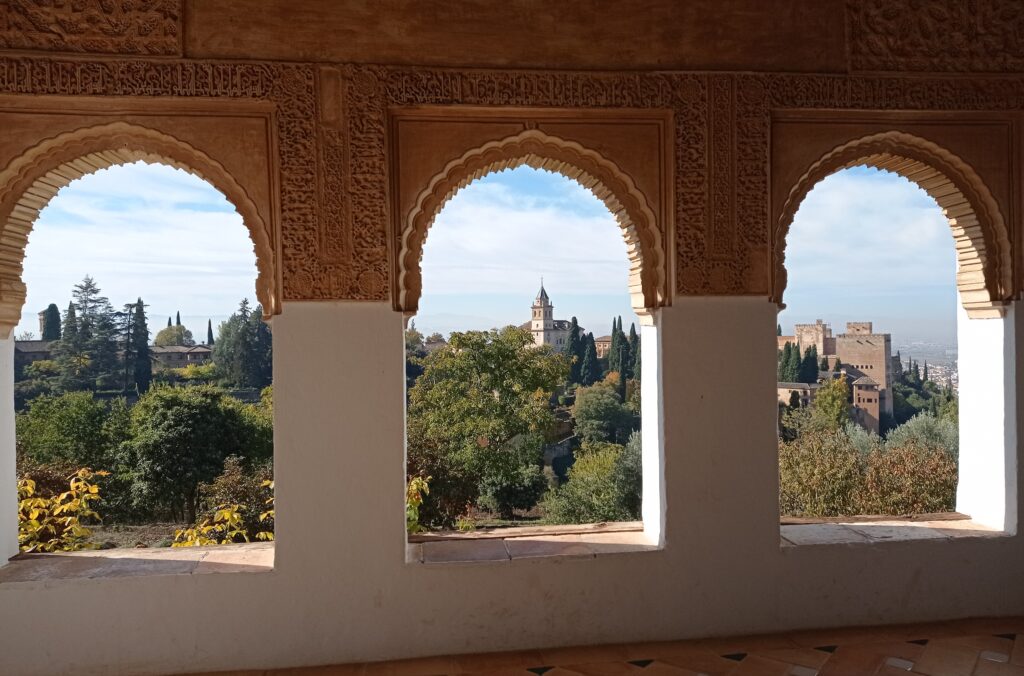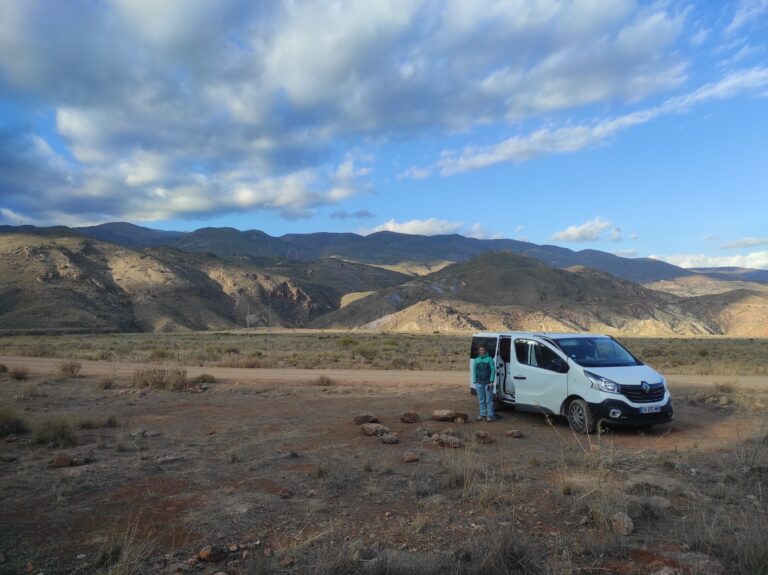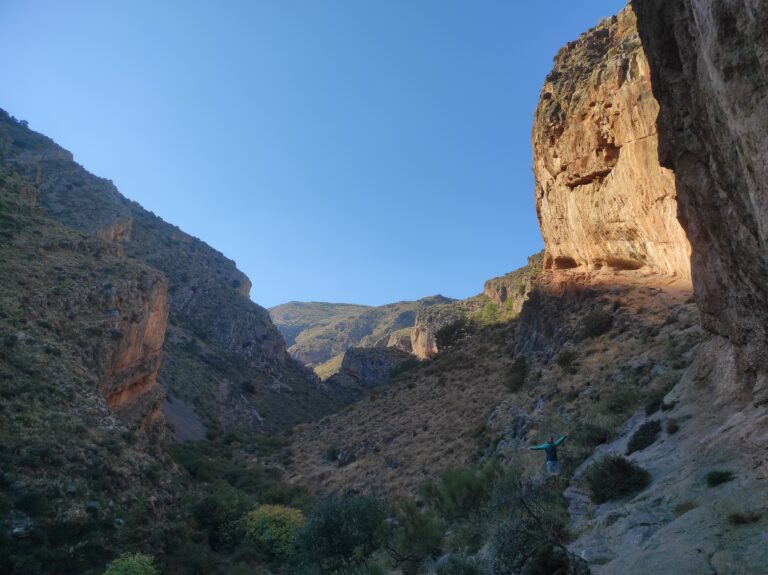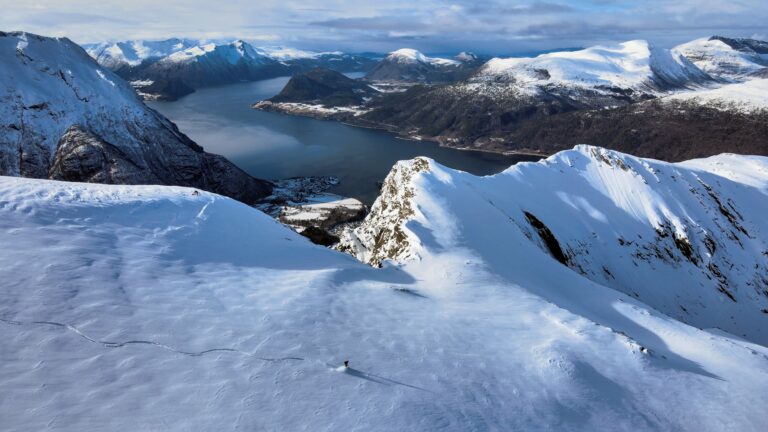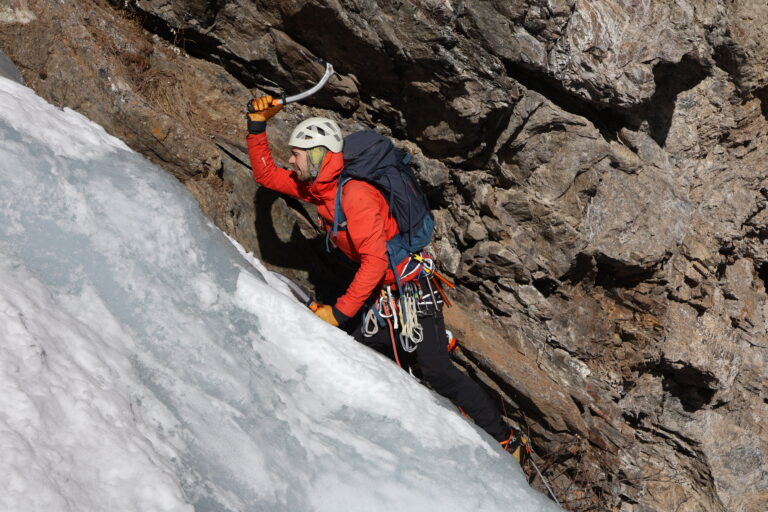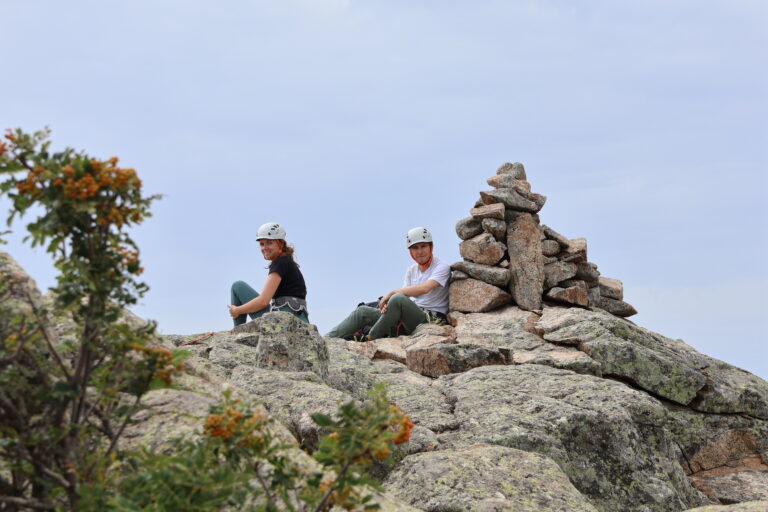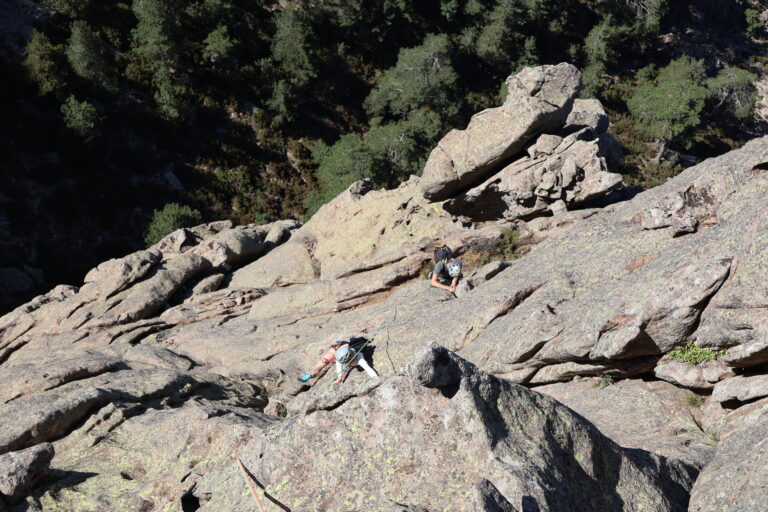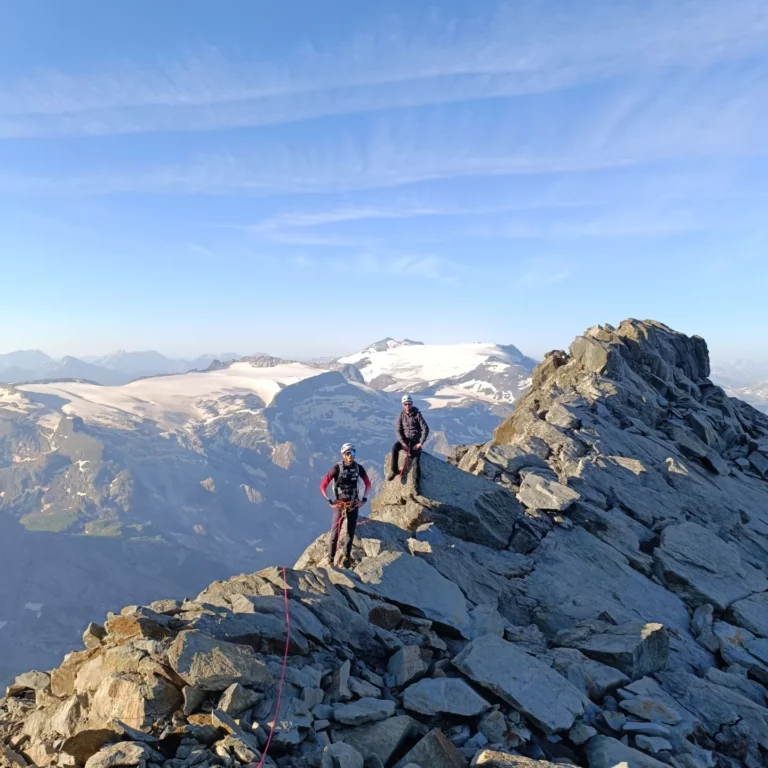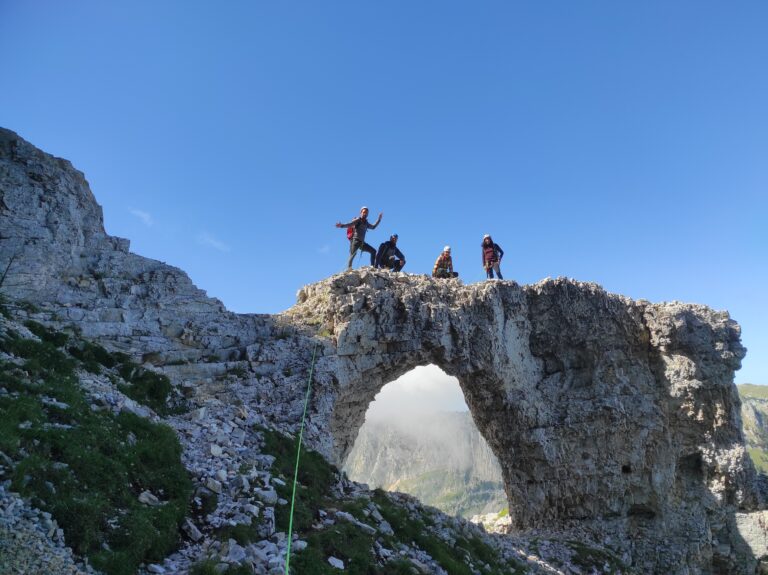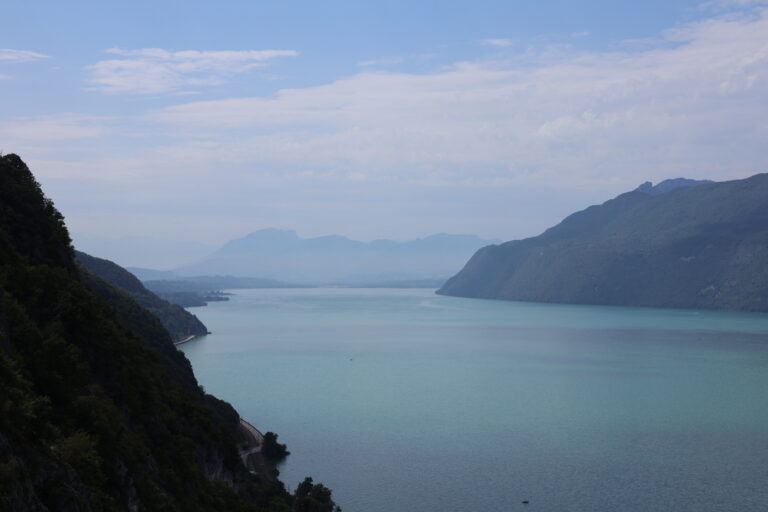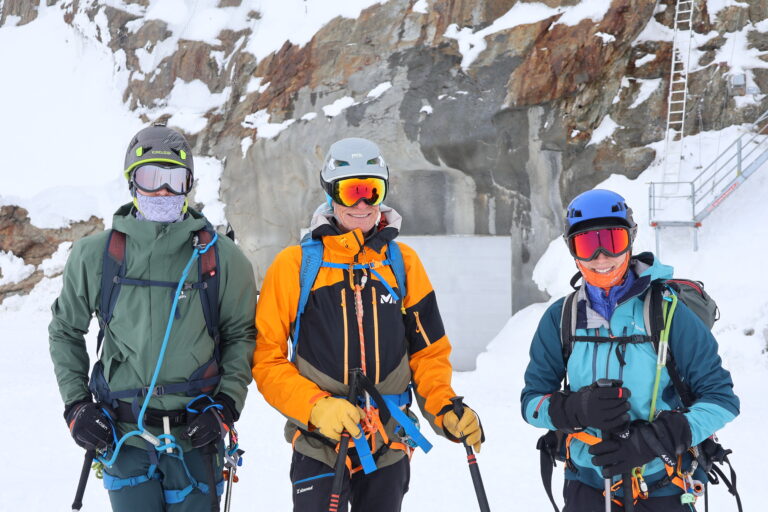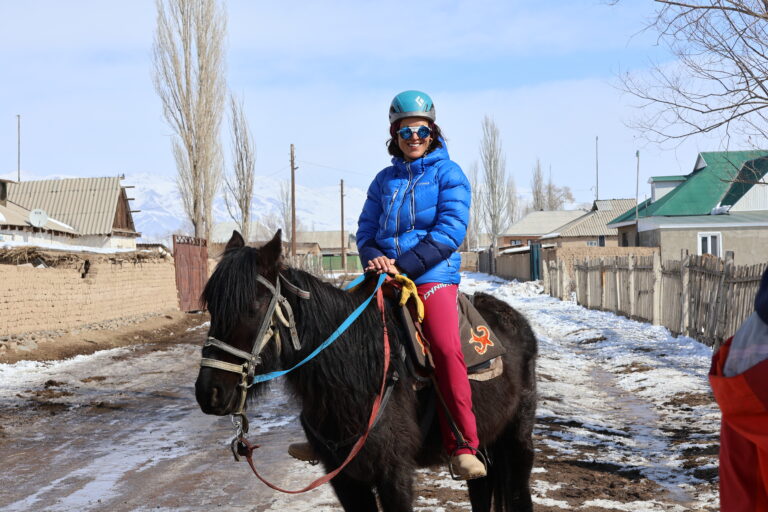Foreword: The two months between seasons are a good opportunity to recharge your batteries by exploring new landscapes, often via beautiful, sunny crags. The first of three articles written in non-chronological order, this chapter 1 of our 'autumn climbs' aims to give you an overview (and not an exhaustive one!) of a climbing trip to Andalusia, and to provide you with some useful sources for organising your own. Then, get in touch with local climbers, you'll meet some great people and they'll be able to give you all the information you need! There are a few guidebooks for Andalusia, but they are not complete, as there are so many climbing sites. They only give a broad overview. Up-to-date guidebooks are often focused on one sector, and the vast majority can be found online. In our experience, it's difficult to buy climbing guides in mountain shops. Instead, they are often on sale on the internet.
At the very tip of the Iberian Peninsula, facing Morocco and Algeria, from which it is separated only by a thin arm of the sea at Gibraltar, Andalusia is just what you'd expect from a real trip: a change of scenery and new discoveries. Bathed in sunshine, the climbing cliffs, often south-facing and mainly concentrated around Granada and Malaga, only become popular in autumn and into spring. Here's an overview of the sites to visit, and some tips on how to organise a two-week climbing and culture holiday in this beautiful region.
Andalusia is a long way away!
From our beloved Savoie, in the heart of the Alps, to Almeria, the eastern gateway to Andalusia, you'll need to cover 1500 kilometres. For comparison's sake, that's almost one and a half times the distance by motorway from Perpignan to Dunkirk. Put another way: it's a long way, a very long way, and if you're planning to come down by lorry - which makes financial sense, we'll come back to that - there are enough climbing spots and towns to visit along the way to break up the journey with some welcome stops.
Once in Almeria, it's another 400 kilometres to Seville via Granada. A visit to both cities is a must, especially after so much driving!
Climbers, how do you get there?
There are several options for getting to the south of Spain. By plane, which we wanted to avoid, or by bus, but both involve hiring a car locally and then adding accommodation. Initially, we wanted to find an alternative solution to the converted lorry, so as not to have to drive it 3,000 kilometres there and back, but on reflection, the ageing of the vehicle is minimal, given that most of the journey is made on motorways, travelling at 110kmh. In fact, motorways are free throughout Spain, which considerably reduces the bill!
So if you're considering the option of travelling down in a van, you need to set aside enough time to split the outward and return journeys into two or three stages, and make the most of it on the spot. Two weeks' travel seems a minimum, but three is certainly ideal.
Once you've set off with the van, however, you'll have to decide between the desire to discover new things and the importance of settling down. Vans are practical and mobile, but you soon find yourself driving around every day, trying too hard!
Tabernas Desert and Barranco de Cacin
We arrive in Andalusia from the east, after a stopover in Valencia for a quick tour of the city. It's a five-hour drive from Valencia to Almeria, on the edge of the Tabernas Desert,
We spend the night there, then set off the next morning to discover this unique and atypical environment. Isolated in the middle of dry canyons with the occasional oasis, we walk through a dry, sandy, mineral world. Only a few tyre tracks and the occasional visible road remind us that, surprisingly, civilisation is not so far away. It's November and it's been a cool night, but by mid-day the sun is beating down on the gorges and we can imagine the unbearable heat of a summer's day. Here, the temperature can rise to 50 degrees! Unlike our high mountains, where the cold reigns, here it's the heat that makes life almost impossible. This is my first time in a desert environment. I'm discovering a new hostile yet fascinating environment. At the bend in a ridge, a rolling stone attracts our attention: two Iberian ibexes are quietly moving away to keep us at a distance. Despite the aridity of the land, we find some ruins, opposite a few olive trees that survive there. The water that is supposed to keep them alive is pumped into a basin below, from a river that is supposed to flow underground.
From canyons to gorges, we imagine ourselves in a film from the 60s, with Indians and cowboys. The desert has been the location for many spaghetti westerns, including Once Upon a Time in the West, The Good, the Bad and the Ugly, Fort Bravo and other classics such as Lawrence of Arabia! Following in Sergio Leone's footsteps, you can still visit Fort Bravo, Lawrence of Arabia's oasis, or "filming villages" such as Western Leone, Texas Hollywood.
In Western Leone, which we visited perfectly alone, we had fun in the remains of the saloon, the sheriff's house and the bank. We were enjoying ourselves all the more as we were escaping the flood of tourists that usually flood these attractions.
Leaving the desert behind, we head west through Gador, where lemons and clementines grow surprisingly well, despite the apparent lack of water. As we go deeper into the massif, we come across many small white villages perched on either side of the valley, in a still arid landscape. We make a short stop at 3.30pm in Padules, a village that looks deserted but whose restaurant is finally bustling with life. Lunch at 3.30pm - Spanish pace! - Then we head for the foot of the Barranco de Cacin, the first recommended climbing spot in the region.
The Barranco de Cacin is clearly the must-see in this part of Andalusia. The only truly major site around Almeria, it's a 30-minute walk uphill from the car park in the middle of the pampas, where many climbers spend the night. Lost in the middle of a plateau of dry grass, brambles and olive groves, you'll have a great experience of solitude and peace of mind!
As far as the climbing is concerned, the rock is superb, but very abrasive (orange limestone with pimples) and therefore very hard on the fingers and the mind! The fall is not very tempting. In the first two sectors, on either side of the canyon, the climbing on vertical or slightly overhanging walls is very technical and requires fingers. The main east sector is more for strong climbers, with many routes in the 7/8 range, although some are easier. The West sector is perfect for 6 climbers, with many 6b/c routes. In November, the sun begins to shine on the East Cliff from 10.30am.
We only spent one day there, given our itinerary, but three days doesn't seem too much to get the most out of the canyon and visit a few areas.
Tips: If you want to climb a little further than Almeria, there is a small cliff in the village of Sierra Alhamilla. There are a few houses and some old thermal baths, and 58° hot water flows from a fountain in the middle of the village. Here you can fill up a jerrycan for your evening shower! With a few routes in grades 6 and 7, Penon Mitico offers technical climbing on unusual limestone, a kind of conglomerate. There's nothing exceptional about the site, but it's a peaceful, atypical setting, and a trip there will make the journey to fill up with hot water worthwhile.
Topo de Penon Mitico https://www.tamissportalmeria.com/sierraalhamilla.htm
Topo de Barranco de Cacin https://www.toskajara.com/escalada.php?showid=0&on=44&showid=34
Granada and the surrounding area
As we made the transition from the Sierra de Gador to Granada, we chose to pass by the Mediterranean Sea, briefly skirting the coast to the south. In this region, every inch of land is covered with huge white greenhouses. Grown above ground, in trays of clay granules sprinkled with water enriched with mineral salts, all these fruits and vegetables are out of season, and will then be sold all over Europe, neatly lined up and bursting with colour in the bins of our supermarkets. So here's to tomato, courgette and aubergine lovers in winter!
Just 20 minutes north of Granada are two climbing sites that can keep you busy for a few days. Cogollos Vega and Alfacar. If you want full information on climbing in the region, the best place to go is the Solana de Granada youth hostel in Cogollos Vega, which is run by a climbing instructor. He'll be able to advise you and sell you the right guidebooks! (Link to their website, and a review of the climbing areas in the area. https://solanagranada.com/climbing-areas/).
Cogollos is more for 7/8 climbers, although there are a few 6 climbs in between. To satisfy everyone, we went to Alfacar, a very popular site at weekends. Luckily, it was a weekday! The lower sectors are full of rather long 5/6 routes, on grey limestone slabs or vertical. If you take the road up to the col, you'll reach the upper sectors, including a fairly hard south-facing bar (between 7b and 8b) just a 3-minute walk from another, easier one, with a dozen or so routes between 5+ and 6c. The perfect compromise for us! In November, on the south-facing slope, we were fine to climb in the sun, but we had to cover up for the belay in the shade. As Alfacar is already quite high in altitude, it's possible to climb it in the summer - a remarkable climb in Andalusia - by moving to the north face.
Tips: As we didn't know of any good places to sleep, when we arrived at night we found a very dirty car park by the side of the road, which is clearly not a dream spot to sleep! The best thing to do, after scouting around, is to sleep 2 minutes away at the foot of the sectors at the top of Alfacar, where there's a lovely stretch of grass with a beautiful view.
The city of Granada and its palaces are so beautiful that I wouldn't understand going there without visiting them. Whatever your climbing pace, you're bound to need some days off, at least for the skin, and these tourist and cultural activities will fill them perfectly! Granada is a beautiful city, which we had been told was a museum town, and indeed we found it less authentic and lively than Seville. The star attraction, and rightly so, is undoubtedly the Alhambra, a fortified city high above the city. Comprising the Alcázar (fortress), Charles V's palace, the Nasrid palaces and the Generalife Gardens, the last two are not to be missed under any circumstances. And if you're curious about history, don't be stingy with the audio guide! Walking up to the Alhambra and visiting the palaces and gardens takes half a day. On the way back down, it's a good idea to complete your tour of the city with a visit to the Alcacin district, then the Alcaceira and the cathedral in the centre. To make the most of the evening atmosphere, we recommend taking an AirBnb (approx. €50) and leaving the lorry in a covered car park for the night.
Tips
A little further north of Granada, Moclin is one of the most popular climbing sites in the area. We don't have time to make the diversions, but the site has a good reputation and is well worth a day or two.
https://escaladagranada.es/croquis-de-escalada-moclin
Villanueva del Rosario, between Granada and El Chorro
After Granada, we set off westwards again, aiming for the famous site of El Chorro. But on the way, we pass Villanueva del Rosario, and decide to make a stop there. The little village is isolated in the middle of olive groves, where we find everything we need for supplies, as well as a bar/restaurant. Quiet, slightly elevated with a superb view over the plain to the north, we spent one of the most beautiful nights of the trip there under a magnificent starry sky. The next morning we discovered other spots, more popular with climbers, where we could put the truck down, notably a small car park next to a chapel, and above all opposite the impressive cave where Chilam Balam, a 75m 9b, can be found. A conti monster. You can see from Dani Andrada's head (video link below) what a piece of work it must be!
On this day, we chose to put aside the tough 8-pitch routes in the shade, and instead take a walk around the ridges of the sierra. Climbing up the road above the chapel, we follow a valley and skirt the mountain below which lies the cave of Chilam Balam. Passing along its southern slope, we discover a large limestone bar 40m high at its lowest point, with several pitches at its left end. This is the most accessible part of Villanueva del Rosario, of which we were unaware. Facing due south, the cliff is a favourite with 6/7 climbers. At the foot of the cliff, you can also leave your lorry and sleep in a heavenly, tranquil spot in the mountains. After gathering some information from the climbers, we continue our hike.
There are very few, if any, footpaths here, so we often climb off-piste, between lapiaz and dry grass moors. As we approached the ridges, we spotted hordes of Iberian ibex, which must not be used to visitors. They are much more shy than their placid Alpine cousins. Over a wide plain and the Málaga mountains, the view stretches as far as the sea to the south, while to the north the olive-covered hills fade into the horizon.
El Chorro
We hit the road again at the end of the day to reach El Chorro, some forty kilometres to the west as the crow flies. The site lies to the north-west of the mountains behind Málaga, where you'll find the most cliffs in Andalusia.
From Antequera on the plain, we head into the mountains on a winding road until we suddenly come down to the tiny village of El Chorro. Beneath the cliffs and on the edge of a (man-made) lake, the place could have everything you could wish for, were it not for the hydro-electric power station, which produces a constant background noise that can be rather annoying in the long run. On the other hand, the village is as good as dead, with a railway station, a bar and a hotel all closed. Historically, the pueblo was an obligatory stop on the Malaga/Madrid train line, and the proximity of the dam was used to supply electricity to a number of factories. It became a tourist attraction when King Alfonso XIII visited in 1921 to admire the waterfall (El Chorro in Spanish). Busloads of people from Málaga travel to the famous El Caminito del Rey tourist attraction, which is now the only reason for the village's existence apart from electricity generation.
The gorge where the waterfall gushes out is indeed impressive, made accessible to tourists recently by a footbridge path above the canyon, but previously only by a via-ferrata and by climbing. The gorge boasts some historic routes, which is why El Chorro is a benchmark among Andalusian climbing sites. Before the gorge and above the village, the immense rocky bar where the griffon vultures nest is divided into around fifteen sectors of rind, often extending into large equipped routes or adventure areas. As the routes become more popular, they inevitably develop a patina, but you can avoid this problem by choosing the right sectors. We chose to go to the La Momie sector, which seemed to have the diversity of levels to satisfy us, and found some superb long and athletic routes, including a superb 6c of 45m! Easy climbing for those who like big moves on good holds.
Tips
Don't sleep at El Chorro, at the car park near the lake at the start of the Caminito del Rey. We were rather disturbed by the noise from the power station, and the atmosphere is not very pleasant. It's probably better to sleep further up the valley, towards Valle del Abdalajis, or even a few kilometres further west towards the artificial lakes, where we saw many lorries and camper vans setting up on the dry banks.
There are two other great climbing sites nearby: Turon and Valle del Abdalajis.
Grazalema, a diversion on the road to Seville
It's starting to become a habit, and we're back on the road! We could stay longer, to discover and enjoy more of this area, but the desire to discover other places and landscapes is too strong. It's not absurd, for such a short trip to such a remote region. We're choosing to explore, so that we know the broad outlines and know where to stop if we come back.
Our departure from El Chorro proved us right. On our way to Seville, thanks to the guide in the lorry, we spotted the little village of Grazalema, apparently renowned for the charm of its beautiful white houses. Our arrival at the site confirmed this. Hidden away in the mountains, between pastures and cliffs, we immediately fell in love with this village which, for the first time on our trip, was alive with life. Several cafés, bars and restaurants in the square and alleyways, luxury car parks to leave the lorry and beautiful cliffs - just what we were looking for! So the next day began as it should with a "café con leche" with the locals, then we headed off to the east-facing cliffs, which catch the first rays of sunshine at 9.30am at this time of year.
Two areas 5 minutes from the road, in pastures - ideal with children - are 15 minutes apart on foot. The one on the left has only 4/5/6 routes, and is therefore perfect for beginners and experienced climbers. The one on the right, on the other hand, doesn't go below 6c, most of the routes being between 7b and 7c, and some new ones not indicated in the topo are probably in 8.
In both sectors, the routes are long, varying between 20 and 40 metres. The rock is very sculpted with holes, sometimes with picots, good slats and slightly overhanging in the right-hand sector. It's a style that suits me well, but it's not universally appreciated!
Grazalema is well worth a visit for at least two or three days, with the possibility of a day's hiking in the surrounding Sierra.
Seville and Cordoba, to visit in two days
Two more compulsory stops on our tour of Andalusia. We're staying in Seville for two nights in an AirBnb, so that we can enjoy the nightlife and visit the city without any restrictions. The city centre is huge - can we even call it a city centre at this stage - and the nightlife never seems to stop. We got lost in the maze, with only the tapas bars to focus on. Sangria and "tinto de verano" are the perfect way to round off two wonderful evenings.
Seville is very pleasant for its large green spaces, soothing in the turbulence of the city: the interior garden of the Alcazar (worth a visit), the Maria Luisa park where the Spanish Steps are located, and the quays of the Alfonso XIII canal. We walked 25 kilometres!
On the second day, at the end of the morning, after a jog along the quayside, we set off on our return to the north of Spain, with Cordoba as an intermediate stopover. Another city to visit, but we'd seen enough and wanted to get back to nature and the cliffs. We were not disappointed by our visit to the Great Mosque of Cordoba, where we admired the mix of Muslim and Christian styles. As we were about to leave, we bumped into a college guide from Courchevel in the middle of a square, who I'd never met before, but who recognised me. I've had travel surprises before, it's such a small world.
Margalef on the way home
There are plenty of climbing sites on our return journey, to cut the long road back to France. Initially, we had two options: go north and climb around Madrid, or come back via Valencia and stop off at Chulilla. In the end, we opted to drive all the way to Catalonia to discover Margalef. After a huge night-time driving mission (8pm-4am non-stop!) the choice proved to be the right one. Firstly, true to its reputation, Margalef is exceptional, and secondly, Chulilla doesn't really seem suitable for climbers under 7. However, we'll have to come back with climbers of this level, as the valley and village look magnificent.
We stayed two nights in Margalef, one at the campsite (€10 a night for two in a truck, €3 for a shower token - unbeatable) and one in a car park. The atmosphere is great, with a great community of climbers. On the first day we climbed at Laboratori, where we met some friendly Singaporean climbers/photographers, and on the second day we climbed at Les Espadelles, a magnificent south-facing bar that stretches for a few kilometres. The domed, orange cliffs stand out against a backdrop of blue sky, and we're climbing like a postcard. The climbing on pockets ranging from single to three-fingered is fantastic, but beware of injured joints! After two days of good climbing, our fingers are worn and swollen. Clearly a major site in Spain, we knew it and we confirm it. We absolutely must go back!
Andalusia, in conclusion
Everyone chooses their own way of travelling, and changes it according to their mood! For this trip to the south of Spain, what we really needed was a change of scenery, some discovery, good weather and some climbing. We got what we were looking for, and saw a lot. Not everything, of course, and thankfully so! As is often the case when we come back from a trip, we have the pleasure of having found something new, and the feeling that we've only just scratched the surface! We come back with even more ideas in our heads, and our to-do list has grown even longer. A lifetime won't be enough to finish it and explore it all - the things to do and see are endless. It's dizzying, and so much the better! For those of us who are trying to promote a form of sobriety in our travels, it's encouraging to realise that we have no reason to be afraid of getting bored.
I hope this feedback will help other climbers/travellers to discover this surprising region.
A big thank you to Stéphane Chollat, Bruno Farra and all the locals we met, whose invaluable advice helped us build our itinerary over these two weeks.

